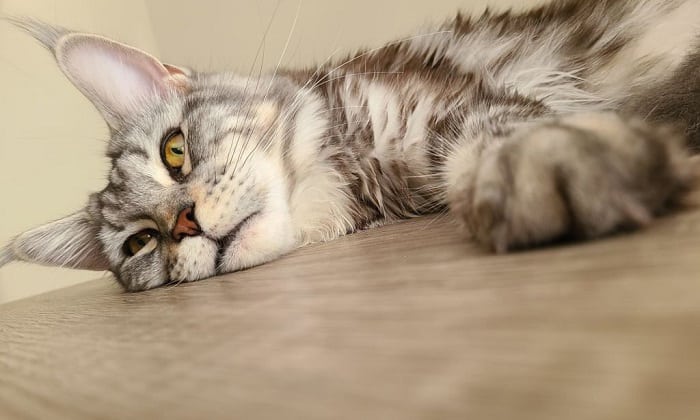How Hot is Too Hot for Cats? Cats are known for their love of warmth and cozy spots, but it’s important to be aware of the temperature thresholds that can be dangerous for them. High temperatures can put cats at risk of heatstroke, which can be life-threatening if not treated promptly.
To ensure the well-being of your feline friend, it’s crucial to understand the signs of heatstroke and take preventive measures. Heatstroke in cats can occur when their body temperature rises above normal levels and their natural cooling mechanisms, such as panting, are not sufficient to regulate it.
Some signs of heatstroke in cats include excessive panting, drooling, lethargy, rapid breathing, and vomiting. If you notice any of these symptoms, it’s essential to take immediate action to cool your cat down and seek veterinary assistance.
To prevent heat-related issues, make sure your cat has access to shade and cool areas during hot days. Provide fresh water at all times and consider using cooling techniques such as fans, ice packs, or cooling mats. Regular grooming can also help promote better heat dissipation.
Remember, cats are sensitive to heat, and it’s crucial to be proactive in protecting them from extreme temperatures. By being aware of the signs of heatstroke and taking preventive measures, you can ensure your cat stays safe and comfortable even on the hottest of days.
Outdoor Temperature Risks
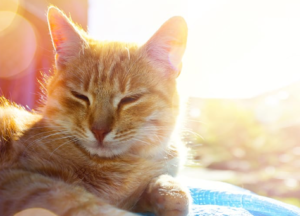
To keep your feline friend safe during hot weather, it is important to take certain precautions. Providing access to shade is essential, as it allows cats to escape direct sunlight and find relief from the heat. Creating a cool area with a shelter or a cozy spot indoors can also help them stay comfortable.
Additionally, always ensure that fresh water is readily available for your cat. Hydration is key in preventing heat-related issues. You can even consider placing multiple water bowls in different areas to make it easily accessible for them.
It is important to be aware of the signs of heatstroke in cats, such as excessive panting, drooling, lethargy, and vomiting. If you notice any of these symptoms, it is crucial to take immediate action. Move your cat to a cool area, offer them water, and contact a veterinarian for further guidance.
By understanding the risks of high outdoor temperatures and taking preventive measures, you can ensure the safety and well-being of your beloved feline companion during hot weather.
Indoor Temperature Risks

One of the main risks of high indoor temperatures is heat exhaustion. This occurs when a cat’s body temperature rises to dangerous levels, leading to dehydration, lethargy, and even organ failure. To prevent heat exhaustion, it is essential to provide adequate cooling measures.
- Ensure proper ventilation in your home, allowing fresh air to circulate.
- Keep blinds or curtains closed during the hottest parts of the day to block out direct sunlight.
- Place fans strategically around the house to promote air circulation.
- Provide access to cool areas, such as tiled floors or rooms with air conditioning.
Additionally, make sure your cat always has access to fresh water. Consider placing multiple water bowls in different areas of your home to encourage hydration. You can also freeze water in a bowl or use cooling mats to provide a refreshing surface for your cat to lay on.
By taking these precautions and creating a comfortable indoor environment, you can help your feline companion stay cool and avoid the risks of heat exhaustion.
Signs of Heatstroke
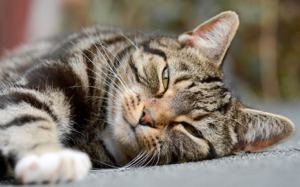
- Excessive panting
- Excessive drooling
- Red or pale gums
- Vomiting or diarrhea
- Weakness or lethargy
- Rapid heartbeat
- Collapse
If you notice any of these symptoms in your cat, it is crucial to act quickly. Here are some immediate actions you can take:
- Move your cat to a cool and shaded area.
- Offer fresh water for them to drink.
- Wet their fur with cool (not cold) water or use damp towels to help lower their body temperature.
- Contact your veterinarian for further guidance and potential emergency care.
Remember, heatstroke is a medical emergency, and prompt action can save your cat’s life. It is always better to prevent heatstroke by ensuring that your cat has access to shade, cool areas, and plenty of fresh water during hot days.
Preventive Measures
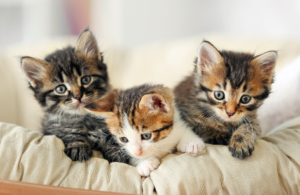
- Ensure access to shade: Cats can easily overheat when exposed to direct sunlight for extended periods. Make sure your furry friend has access to shaded areas, whether it’s indoors or outdoors.
- Provide fresh water: Hydration is key to keeping cats cool. Always make sure your cat has access to fresh, clean water throughout the day. Consider placing multiple water bowls in different areas of your home.
- Create cool areas: Help your cat find relief from the heat by creating cool spots in your home. You can use fans or air conditioning to lower the temperature, or provide cool surfaces like tiles or cooling mats for them to lay on.
Additionally, it’s important to be mindful of the time of day you engage in outdoor activities with your cat. Avoid taking them out during the hottest parts of the day and opt for early mornings or evenings when temperatures are cooler. By implementing these preventive measures, you can help your cat stay comfortable and safe during hot weather.
Cooling Techniques
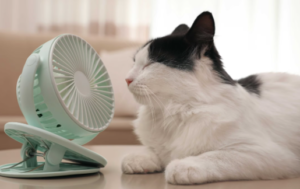
- Use fans: Place fans strategically around your home to create a cool breeze. Cats enjoy the gentle airflow and it can help lower their body temperature.
- Provide ice packs or cooling mats: Place a chilled ice pack or a cooling mat in your cat’s favorite resting spots. These provide a cool surface for them to lie on and can help regulate their body temperature.
- Grooming techniques: Regular grooming can help promote better heat dissipation. Brushing your cat’s fur helps remove excess hair and allows air to circulate, keeping them cooler.
Remember, it’s important to monitor your cat’s behavior and ensure they have access to fresh water at all times. If you notice signs of heatstroke, such as excessive panting or drooling, it’s crucial to take immediate action by moving your cat to a cool area, offering water, and contacting your veterinarian.
Frequently Asked Questions
- Q: What temperatures are considered too hot for cats?
- A: Cats are sensitive to high temperatures, and anything above 90°F (32°C) can be dangerous for them. However, factors such as humidity and individual cat health can also impact their tolerance. It’s best to monitor your cat closely and take preventive measures when temperatures rise.
- Q: How can I keep my cat safe during hot weather?
- A: To keep your cat safe in hot weather, provide plenty of fresh water and shade for them to cool down. Avoid leaving them outdoors during peak heat hours and consider using fans or air conditioning indoors. Additionally, never leave your cat inside a parked car as temperatures can quickly become life-threatening.
- Q: What are the signs of heatstroke in cats?
- A: Signs of heatstroke in cats include excessive panting, drooling, lethargy, vomiting, and rapid heartbeat. If you notice any of these symptoms, it’s crucial to take immediate action by moving your cat to a cooler area, offering water, and contacting a veterinarian.
- Q: How can I prevent heat-related issues for my cat?
- A: Preventive measures include ensuring your cat has access to cool areas, providing fresh water at all times, and keeping them indoors during the hottest parts of the day. You can also use cooling techniques like grooming to help dissipate heat more effectively.
- Q: Are there any specific cooling techniques for cats?
- A: Yes, there are several effective cooling techniques for cats. You can use fans to improve air circulation, offer ice packs or cooling mats for them to lie on, and groom them regularly to remove excess fur and aid in heat dissipation. Remember to introduce these techniques gradually and observe your cat’s comfort level.
